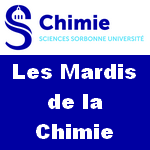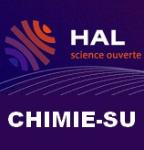Les Mardis de la Chimie | Julia Contreras-Garcia "Constructing new models to predict superconductivity"

UFR DE CHIMIE LES MARDIS DE LA CHIMIE
Conférencière invitée
Julia Contreras-Garcia | Laboratoire de Chimie Théorique
CONSTRUCTING NEW MODELS TO PREDICT SUPERCONDUCTIVITY
CONSTRUIRE DE NOUVEAUX MODÈLES POUR PREVOIR LA SUPRACONDUCTIVITÉ
Abstract - om temperature A ro superconductor is probably the most desired system in solid state physics. So far, the greatest advances, cuprates, pnictides and number of others were obtained in a serendipitous way. As there is no clear theory for these superconductors, it is difficult to predict where progress will be made. In contrast the Bardeen-Cooper-Schrieffer (BCS) theory gives a clear guide for achieving high Tc, and hydrogen seems to be a main clue. Within this approach, the recently reported superconductivity at 190 K in compressed H2S [1] has been arguably the biggest discovery in the field since the superconducting cuprates nearly 30 years ago.
However, a microscopic understanding of why this particular material features such a strong coupling is still missing. We have recently shown that the underlying chemical structure and bonding need to be characterized for a good comprehension of the chemical composition-superconductivity relation. We have constructed simple metal and BCS models showing that the Electron Localization Function [2] can be used to define a quantity called the networking value, which should provide insight into the superconducting activity. By analyzing through DFT calculations the structural and electronic properties of nearly 200 compounds predicted to be superconductors in the literature, we have shown that the networking value correlates well with the predicted critical temperature, much better than any other
descriptor analyzed thus far. And this, for all bonding types [3]. The discovery of the positive correlation between superconductivity and the bonding network offers the possibility of screening easily hydrogen-based compounds and, at the same time, sets clear paths for chemically engineering better conductors.
References
[1] A. P. Drozdov, M. I. Eremets, I. A. Troyan, V. Ksenofontov, and S. I. Shylin.
Conventional superconductivity at 203 kelvin at high pressures in the sulfur hydride system.
Nature 2015, 525, 73
[2] A. D. Becke and K. E. Edgecombe.
A simple measure of electron localization in atomic and molecular systems.
The Journal of Chemical Physics 1990, 92, 5397
[3] F. Belli, T. Novoa, J. Contreras-Garcia and I. Errea,
Strong correlation between electronic bonding network and critical temperature in hydrogen-based superconductors.
Natur. Comm. 2021, 12, 5381
Biographie - Julia Contreras is Directrice de Recherche au CNRS, leading the CHemical Interpretation team at Laboratoire de Chimie Théorique (LCT, UMR7616). One of her main areas of research is non covalent interactions (with over 5000 citations). She also wrote the code to visualize this index, NCIPLOT. The associated paper was published in 2011 in JCTC and it has received over 2600 citations and more than 13000 visits. She is chair of the European Committee of High Pressure and president of the FWO chemistry panel. Most recently her interests have turned into superconductivity, where we have been able for the first time to introduce an index that describes superconductivity from fast calculations (Nature Communications 12, 5381 (2021)). During these years she has given 43 invited talks and published more than 100 articles. She has also been involved in the creation of scientific associations (European Committee of Chemical Bonding, Women Under High Pressure).
Les Mardis de la Chimie | Nicolas Sisourat LCPMR
La Faculté de chimie
L'UFR DE CHIMIE
SCIENCE SORBONNE UNIVERSITE
Les dernières publications HAL :

Nouveauté :
Toutes les publications par laboratoires de l'UFR de chimie regroupées
dans la collection
La FCMat en chiffres
- 6 laboratoires
- 160 chercheurs et enseignants-chercheurs
- 74 BIATSS et ITA

